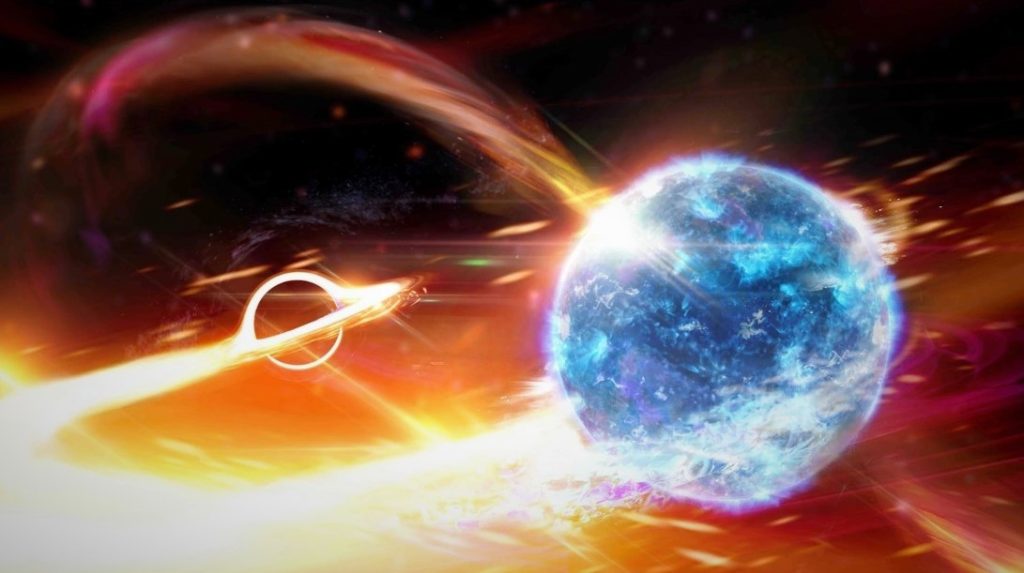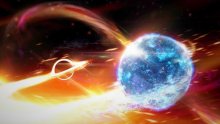First observations of ‘mixed’ black hole and neutron star pairs
The analysis of O3 data from the LIGO and Virgo gravitational wave detectors has twice revealed a “mixed” merging between a black hole and a neutron star. This discovery was published on June 29, 2021 in Astrophysical Journal Letters.
On January 5, 2020 and then on January 15, 2020 two events were detected: GW200105 and GW200115. This is a new type of gravitational wave source theoretically predicted but never yet detected with certainty: the coalescence of “mixed pairs” composed of a black hole and a neutron star. GW200105 came from the encounter, at 900 million light-years from the Earth, of a black hole 8.9 times more massive than our sun and a neutron star 1.9 times more massive than our sun. GW200115, on the other hand, comes from objects 5.7 and 1.5 times more massive than our sun and the encounter took place at 1 billion light-years from Earth. The absence of observation of light signals by telescopes could be due, in both cases, to the direct absorption of the neutron star by the black hole.

Several hypotheses could explain the formation of these “mixed” binaries. A first hypothesis is the encounter, in a very dense stellar environment, of a black hole and a neutron star previously gravitationally separated during their formation. Another hypothesis, currently more favored, is that of a pair of stars orbiting each other and evolving at the end of their lives into a black hole and a neutron star. Future observations and detections will probably bring more understanding on the formation process of these “mixed” couples.
The efforts of LAPP’s technicians, engineers and researchers, whether for the detection system, data acquisition, control and calibration of the interferometer or in the field of data quality and analysis, have contributed to these new detections.
The associated data are available on the open science site: http://www.gw-openscience.org
Links to press releases:
- EGO-Virgo: https://www.virgo-gw.eu/nsbh
- CNRS: https://www.cnrs.fr/en/final-dance-…


